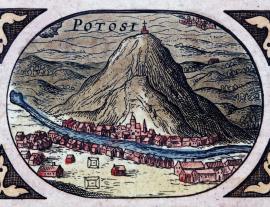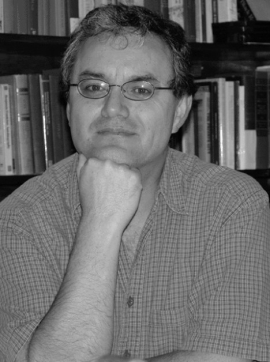
Potosí from a 17th century atlas engraving
In the late 1500s, the mines of Potosí –a mountain in southern Bolivia — produced 60% of the world’s silver. It was a place of great wealth and terrible suffering. It is also a place, Jorge Canizares-Esguerra argues, that challenges the very idea of the Scientific Revolution.

Jorge Canizares-Esguerra
Canizares-Esguerra discusses Potosí and how its peoples and technologies shaped 16th century science. He is the Alice Drysdale Sheffield Professor of History at the University of Texas at Austin. His work has been honored by awards from the American Historical Association and the History of Science Society. His book How to Write the History of the New World was cited as one of the best books of the year by the Economist, Independent, and the Times Literary Supplement.












Excellent conversation!